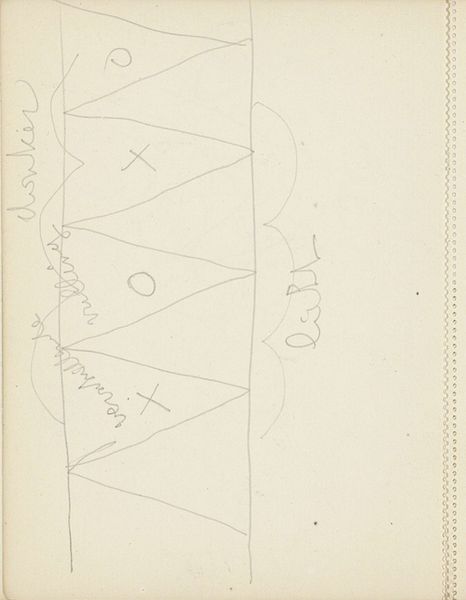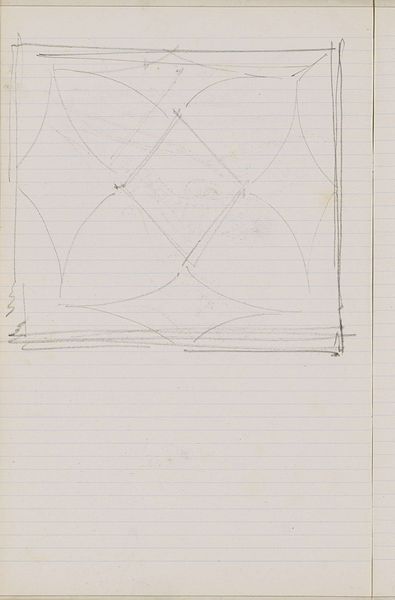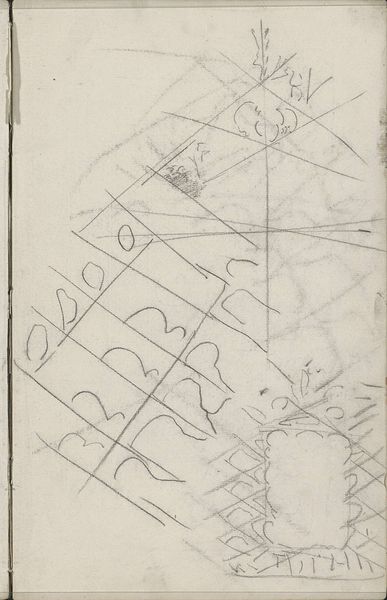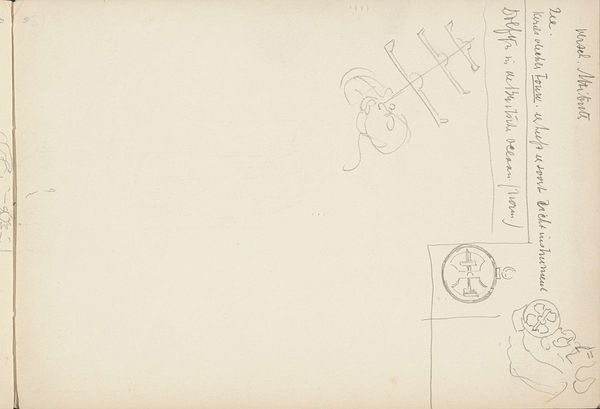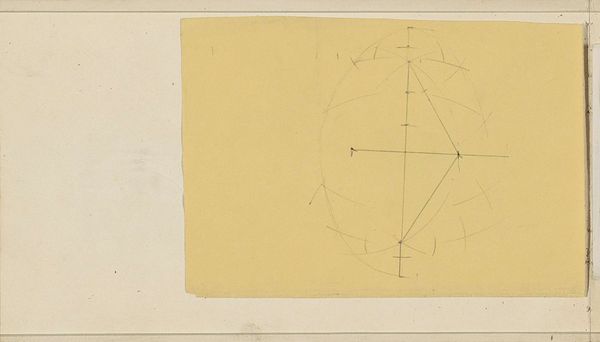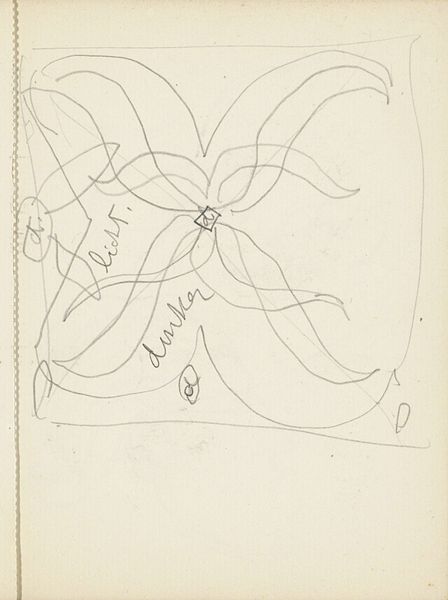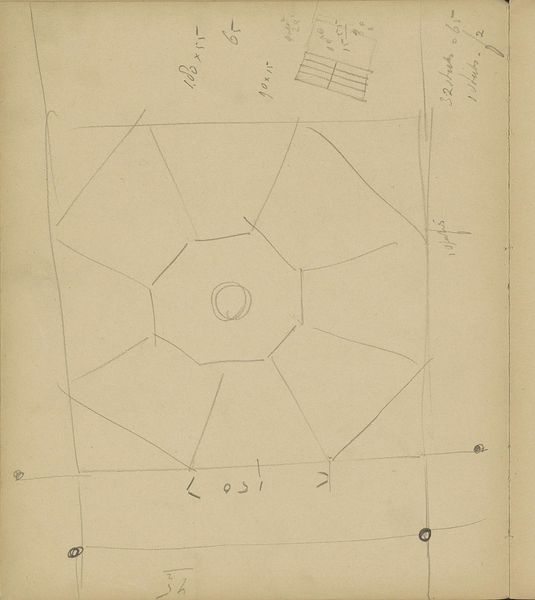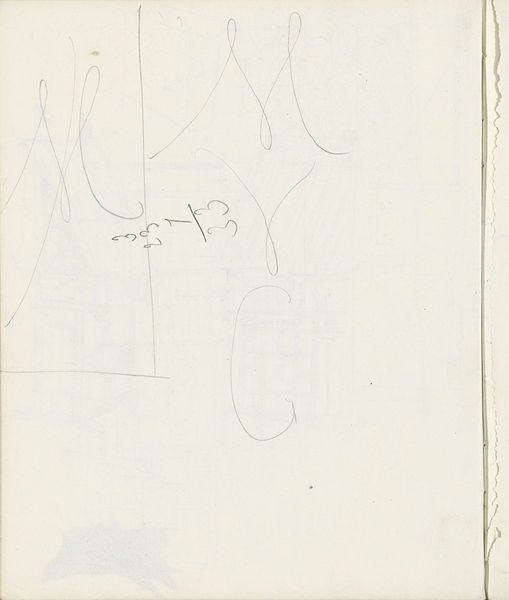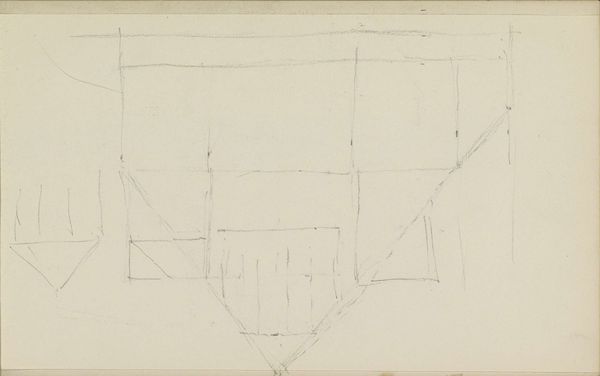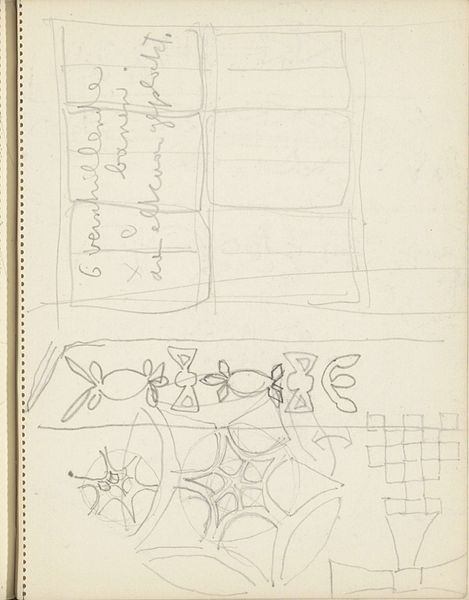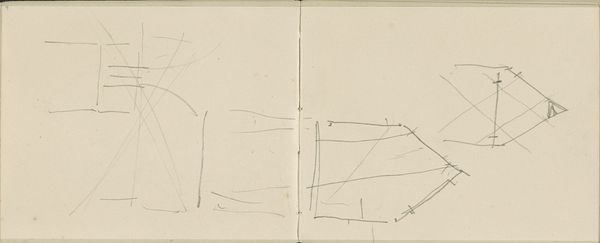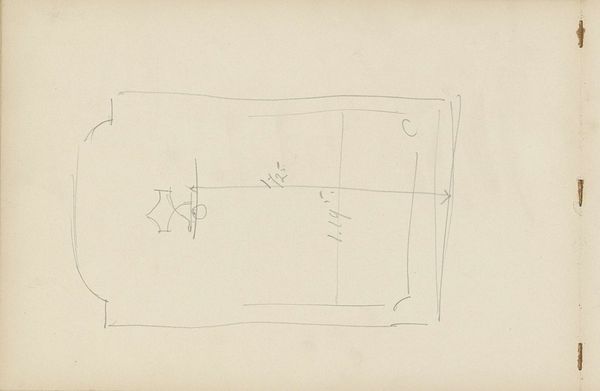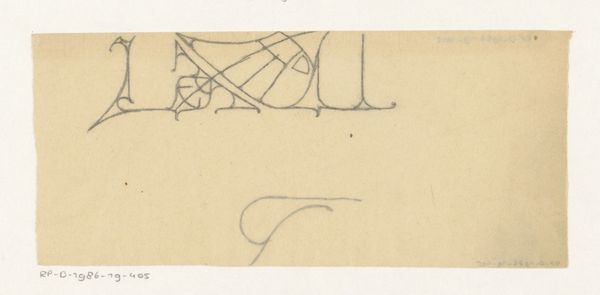
drawing, pencil
#
drawing
#
etching
#
geometric
#
pencil
#
abstraction
Copyright: Rijks Museum: Open Domain
Curator: Looking at this pencil and etching drawing, there is something incredibly appealing in the quiet geometry. It's untitled, dated circa 1916-1945, and housed here at the Rijksmuseum. What do you think? Editor: Stark! There is very little in the way of surface manipulation to distract the eye. Just lines, light, and the stark reminder that a hand labored over these precise, but imperfect, forms. Curator: Imperfect is the key word. In its construction, "Circle in a Diamond in a Square" has so many imperfections! Are these flaws an active artistic choice, and can we relate that back to any particular movement or dialogue of the time? Editor: You know, considering its creation during a turbulent time in Europe, maybe the artist used these basic materials as a challenge to traditional notions of art, subtly pointing to accessibility. This aesthetic almost argues for function, but instead delivers thought! Curator: Precisely! By utilizing common, accessible materials, there is an attempt to democratize the creation and enjoyment of art. Editor: Absolutely, the abstraction serves to push beyond the mere representation and, in turn, encourages engagement from a wide range of backgrounds, especially considering its availability in an institution like the Rijksmuseum. I want to think about who was invited, and excluded from, experiencing works like this one! Curator: It challenges hierarchical notions of "high art" while inviting working people to partake in dialogues through their interactions with simple, but compelling, visual choices. The composition also brings a balanced feel despite its imperfections. The rough strokes invite viewers to analyze, and that is also so compelling. Editor: So well said. It’s almost as if we have unearthed an aesthetic meditation!
Comments
No comments
Be the first to comment and join the conversation on the ultimate creative platform.
